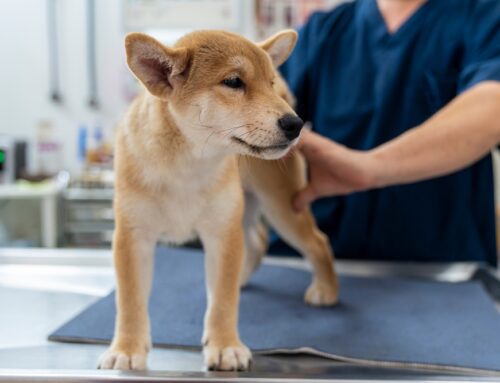Seizures in Pets: What To Do When It Happens and How to Help
When your dog or cat suddenly collapses, paddles their legs, or stares blankly while twitching, it’s terrifying. Seizures are among the most alarming symptoms pet owners ever face. They can range from brief, mild episodes to life-threatening emergencies, and every event deserves careful attention. Knowing what to do in the moment, when to call for help, and how seizures are diagnosed and managed will give you the tools to protect your pet.
At Mission Veterinary Clinic & Animal Emergency Hospital in Granada Hills, our AAHA-accredited team provides advanced diagnostics, emergency stabilization, and long-term management for seizuring pets. Open with extended overnight hours and equipped with critical care, oxygen therapy, surgical support, and advanced diagnostics, we’re here when your pet needs us most.
Recognizing a Seizure
A seizure happens when the brain’s electrical system misfires. Instead of smooth, controlled signals, all the brain cells try to “talk” at once, creating a storm of activity. This sudden surge overwhelms the nervous system and causes the abnormal movements or loss of awareness we see on the outside.
Not every seizure looks the same. Some pets suddenly fall and paddle their legs, while others experience facial twitching, excessive drooling, or repetitive chewing motions. Many appear disoriented, restless, or temporarily blind after the event.
Common signs include:
- Collapse or loss of awareness
- Stiff limbs or paddling movements
- Drooling, chomping, or vocalizing
- Confusion, pacing, or restlessness afterward
Because seizures can indicate a pet emergency, it’s important to always take them seriously.
What to Do if Your Pet Has a Seizure
Seeing your pet in the middle of a seizure is frightening, but your calm actions can keep them safe:
- Stay calm and protect yourself. Do not hold your pet down or place your hands near their mouth. Pets may bite unintentionally during a seizure.
- Clear the area. Move furniture, sharp objects, or other hazards away. Block access to stairs or doorways.
- Remove other pets. Animals do not understand seizures and may misinterpret them as aggressive body language, creating the risk of fights or further injury.
- Reduce stimulation. Lower lights, turn off televisions or music, and keep voices soft to avoid overwhelming your pet’s senses.
- Give space. Step back and allow the seizure to run its course while you monitor safely.
- Time the event. Seizures lasting more than five minutes or happening in clusters are emergencies.
- Record video if possible. A short clip can provide invaluable information for your veterinarian.
Supporting Recovery After a Seizure
The moments after a seizure, called the postictal phase, can be just as disorienting for your pet. They may pace, appear blind, vocalize, or seek comfort. To help:
- Keep the room quiet and calm while they reorient.
- Offer water only when they can swallow normally.
- Do not allow access to stairs or uneven surfaces until balance improves.
Knowing what to do both during and after a seizure not only protects your pet from harm, but also gives your veterinary team the critical details needed for diagnosis.
When Is a Seizure an Emergency?
Some seizures pass quickly, but others require urgent veterinary attention. Call immediately if:
- It is your pet’s first seizure.
- The seizure lasts longer than five minutes.
- Your pet has multiple seizures in a 24-hour period (cluster seizures).
- The event occurs with collapse, possible toxin exposure, or heatstroke.
If a seizure does not stop on its own, your pet may be in status epilepticus– a critical, life-threatening condition that demands emergency treatment. At Mission Veterinary Clinic, our triage-based emergency system ensures actively seizuring pets are prioritized for immediate stabilization.
Why Seizures Happen in Pets
Seizures are a symptom, not a disease, and they affect both dogs and cats. At Mission Veterinary Clinic, our team uses advanced diagnostics to uncover the underlying cause, which may include:
- Epilepsy: The most common cause in dogs and a possible cause in cats. Idiopathic epilepsy typically begins between one and five years of age. Triggers may include missed medication, over excitement, stress, sleep disruption, flashing lights, or sudden overexertion.
- Neurological disease: Trauma, degenerative changes, or brain tumors in pets can lead to seizures. Neurological issues in dogs may start with weakness or imbalance before progressing.
- Systemic illness: Problems outside the brain such as liver disease, kidney disease, or abnormal blood sugar may trigger episodes.
- Toxins: Household and outdoor exposures can be life-threatening. Toxin seizures in cats are common in emergencies. Canine tick preventatives are one cause of toxin-based seizures in cats.
- Unique feline conditions: Seizures in cats may result from infections, metabolic illness, or trauma. Some cats also suffer from feline audiogenic reflex seizures, triggered by high-pitched noises like foil crinkling.
How Veterinarians Diagnose Seizures
Because seizures have so many possible causes, diagnostics are essential for tailoring treatment. At Mission Veterinary Clinic, our approach may include:
- A detailed history and description of the event (videos from owners are invaluable).
- Comprehensive physical and neurological exams.
- Bloodwork and urinalysis to evaluate organ function and rule out metabolic causes.
- Blood pressure monitoring and advanced laboratory testing.
- Digital radiography or ultrasound for systemic disease.
- Referral-level imaging such as MRI or CT scans, and spinal fluid testing when structural brain disease is suspected.
With in-house labs, advanced imaging, and extended overnight monitoring, we can stabilize seizuring pets quickly and begin working toward answers.
Treatment & Long-Term Management
Managing seizures is rarely a one-time event. Pets often need ongoing care and monitoring to stay comfortable and safe. At Mission Veterinary Clinic, we provide:
- Anti-seizure medications tailored to your pet’s size, frequency of seizures, and overall health.
- Regular bloodwork to ensure medications remain safe and effective. It’s not uncommon to need to adjust medication dosages many times over a pet’s life.
- Oxygen therapy and intensive care for life-threatening seizures.
- Safe hospitalization and monitoring overnight, available on most days of the week.
- Pain management and supportive therapies to improve quality of life.
- Dietary counseling, since certain prescription diets may support pets with liver disease or metabolic causes of seizures.
- Environmental guidance, such as keeping routines consistent, minimizing stress, and avoiding known seizure triggers.
For some pets, long-term management means finding the right balance of medication, lifestyle changes, and monitoring. With our AAHA-accredited standards of care, you can trust that every decision is guided by the most current veterinary evidence.

Worried About Seizures? We’re Here to Help
Seizures are frightening, but with prompt care, many pets go on to live long, happy lives. At Mission Veterinary Clinic & Animal Emergency Hospital, our team combines emergency stabilization with advanced diagnostics and personalized treatment plans for dogs and cats.
16915 San Fernando Mission Blvd, Granada Hills, CA 91344
Call us now: (747) 800-5706
If your pet has experienced a seizure, don’t wait. Contact us immediately. Whether it’s your pet’s first episode, an emergency cluster of seizures, or ongoing management, we are here to provide compassionate, life-saving care when you need it most.










Leave A Comment